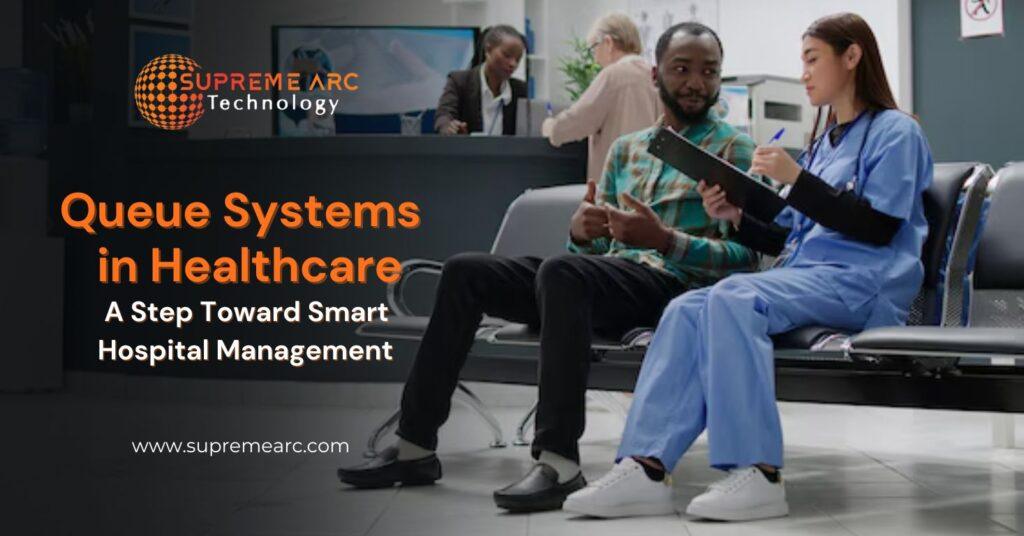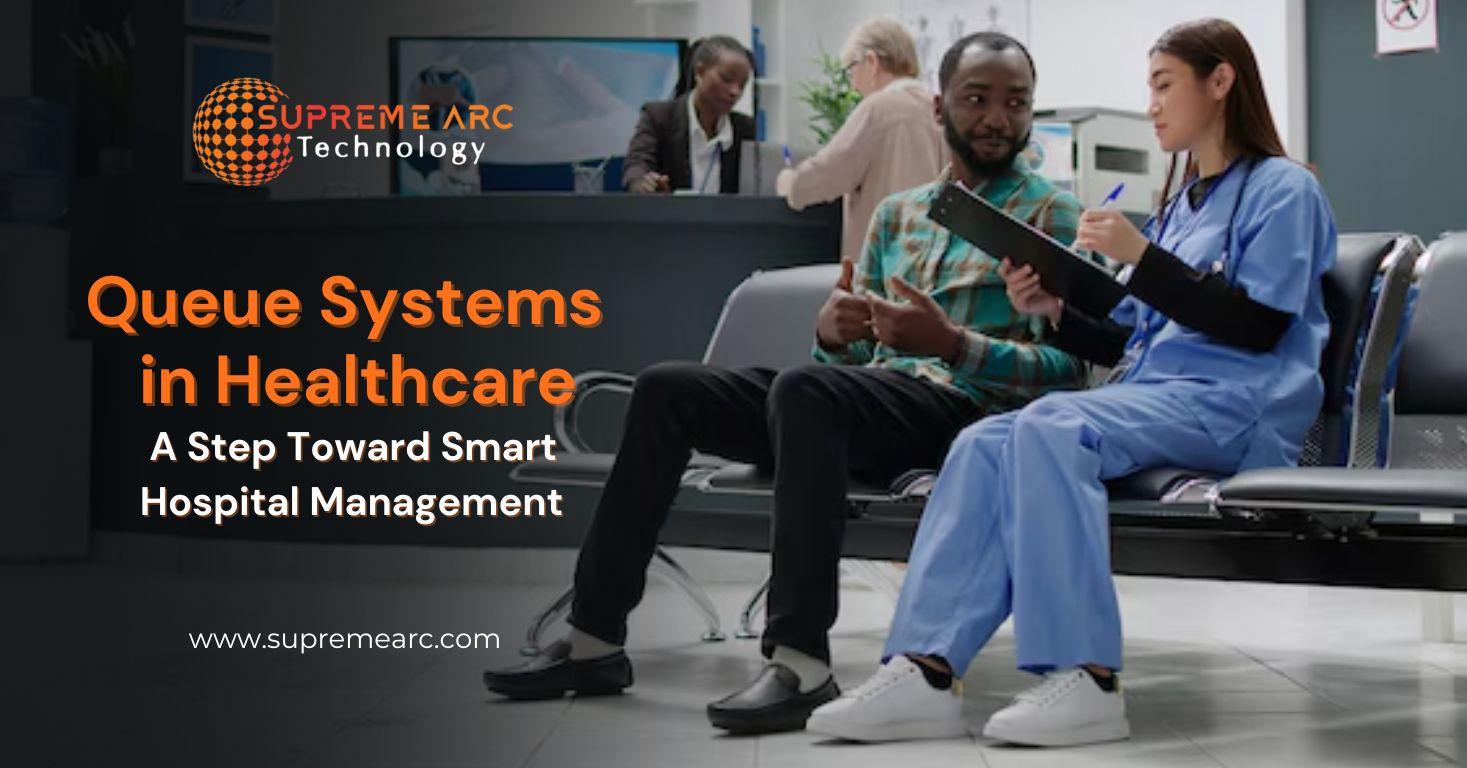Nowadays, patient experience, efficiency and operational excellence are the main concerns of the healthcare sector, which is moving very fast. Waiting for a long time, waiting in overcrowded areas and inefficient treatment of appointments are some of the negative effects on the support of patient satisfaction and staff productivity. To solve such issues, healthcare providers are turning to advanced hospital queue management systems. By managing the flow of patients, these electronic solutions not only lower waiting times but also improve the whole service, which is a fundamental part of a smart hospital management system.
The Challenges of Traditional Queue Management in Healthcare
Healthcare centers are frequently dealing with an excessive number of patients. In conventional settings, patients line up in queues that are very long and they might encounter scheduling errors or feel frustrated because the procedures are not clear.
As a consequence of it, several problems arise:
- Patient Dissatisfaction – Long waiting times can cause irritability among patients which in turn, can lead to a lower level of trust in healthcare providers.
- Operational Inefficiency – Hospital staff members are spending a lot of their precious time on the manual queue organization process.
- Resource Mismanagement – Doctors, nurses and specialists may encounter uneven distribution of patients.
- Increased Stress Levels – The stress that is caused among patients and healthcare staff due to the overcrowding and poor coordination increases continuously.
In order to eliminate such problems, healthcare institutions need to have a reliable and efficient queue management system in place.
What is a Healthcare Queue System?
The healthcare queue system is a modern day solution that profoundly simplifies and organizes the patient flow in a hospital, clinic, or any other medical institution. It enables patients to register their visits electronically, get queue numbers and be guided to the right department with a very short wait time.
Such systems work well with hospital management software and provide functionalities such as:
- Scheduling and rescheduling appointments
- Issuance of tokens (either physical or digital)
- Prompt alerts through SMS or mobile applications
- Linkage with EMRs (Electronic Medical Records)
- Performance tracking through data analytics
Benefits of Implementing a Queue Management Solution in Healthcare
Implementing a queue management system is a powerful way to change the patient experience for the better and also hospital efficiency. Benefits that are primary include:
- Shortened Waiting Times
Patients may schedule visits on the web, get digital tokens and show up at their assigned time, hence the waiting at the hospital is minimized.
- Improved Patient Experience
The patients’ feeling of control is increased as they get up to date information, estimated waiting times and clear directions thus they are less anxious.
- Optimized Staff Productivity
Automated queue allocation enables the healthcare team to concentrate on the health care of patients rather than on the paperwork.
- Better Resource Utilization
Hospitals through intelligent scheduling can not only manage consultation rooms more efficiently but also diagnostic services and doctors administration.
- Improved Data Insights
Queue systems not only generate reports but also offer analytics to healthcare institutions for identifying the potential sources of congestion and planning the way of delivery of the services that solve the problem.
Features of an Effective Healthcare Queue System
Both patient and staff friendly features must be an integral part of congestion successfully managed in queue systems. Some of the most important features include:
- Virtual Queuing – Patients are allowed to wait at home or even outside the hospital and come in when it is their turn.
- Multi channel Appointment Booking – A patient can arrange an appointment not only through a website but also through an app or kiosk.
- Integrated Notifications – Any kind of alert, for instance, SMS or app, informs patients about the forthcoming appointment.
- Touchless Check In – Technologies like QR codes and mobile apps make sure registration is safe and contactless for patients.
- Analytics Dashboard – Hospital administrators are provided with key performance indicators of patient flow, staff efficiency and wait time trends through this tool.
- Scalability – It is possible to open up the system to different departments and branches.
How Queue Systems Support Smart Hospital Management
Healthcare facilities globally are embracing intelligent hospital administration methods, which entail the use of technology in each and every process related to patient care. Their effectiveness in hospital management is due to the fact that they guarantee flawless running of the activities as well as the enhancement of patients’ experiences.
- Integration with Digital Health Records – When electronic queue systems are linked with Electronic medical records, doctors obtain patient information before the examination and thus save time.
- Patient Centric Approach – With tailored notifications and short queues, patients have a positive experience and thus become loyal to the healthcare institution.
- Operational Efficiency – Automation of the processes translates to less manual work, lower chances of mistakes, and less waiting time for the customers.
- Scalability and Flexibility – Medical centers are enabled to quickly change the set up in order to accommodate the number of patients or meet the healthcare needs.
- Data Driven Decisions – Through in depth analytics, leaders can have the right number of employees, release traffic at weak points and be prepared for the next rush of patients.
Real Life Applications
Already, the hospitals and the clinics in every part of the world are reaping the benefits of the solution of the queue management system. Some of the examples are:
- Emergency Departments – Giving priority to patients on the basis of the urgency while managing a regular outpatient queue.
- Specialty Clinics – The appointment slots for the specialists like cardiologists, dermatologists or orthopedics are being managed more efficiently through the queue management systems.
- Diagnostic Centers – Justifying the turnover of patients for X-rays, MRIs or lab tests with the provision of minimal waiting times.
- Vaccination Centers – Allowing a large number of people to be managed efficiently during a mass vaccination drive.
Future of Queue Management in Healthcare
The medical field has been showing a lot of inclination towards digital technology coming first and as a result, the ways the systems in the queues will further evolve are:
- AI Integration – Making automatic scheduling and forecast of the patient’s flow.
- IoT Devices – The smart kiosks and wearables, which can monitor the patient’s condition, have been developed to be used in hospitals.
- Telemedicine Integration – Patients will be easily able to select whether they want a virtual or face to face consultation without any interruption.
- Cloud Based Platforms – Providing the healthcare network with the possibility of being multi located, thus more easily adaptable and with greater potential for expansion.
Such developments lead to the fact that queue systems will be recognized as one of the key factors of innovative management of smart hospitals.
Conclusion
Efficient hospital management has been transformed from a mere luxury to a must have. Through the implementation of a contemporary healthcare queue system, medical institutions can entirely change the patient flow, raise the level of their staff and make better use of their resources. Since medicine is engaging in digital transformation, the future of smart hospital management will largely depend on the use of queue systems.
Supreme Arc stands behind the provision of innovative solutions that make it easy and efficient for healthcare professionals to offer top quality and exceptional care. The adoption of a queue management solution that is done well is not solely for the purpose of shortening waiting times, it is about earning the patients’ confidence, fostering better health conditions and establishing a healthcare ecosystem that is patient centric.







